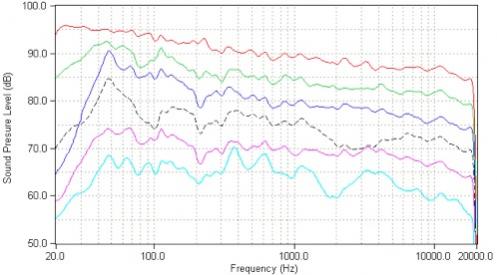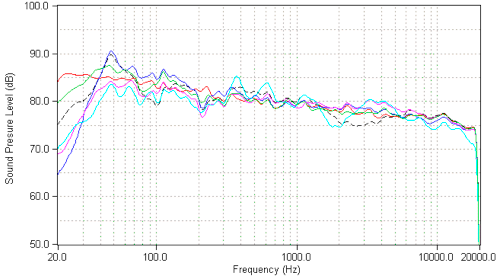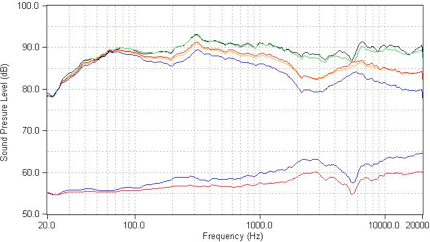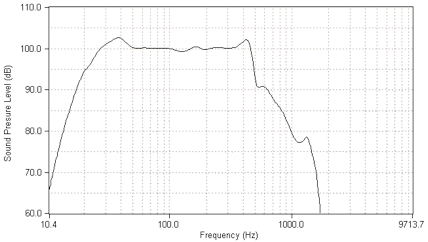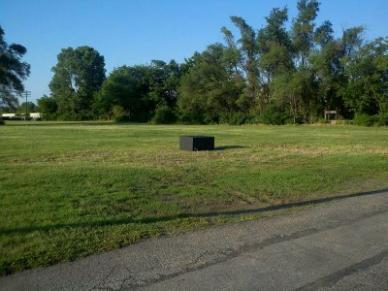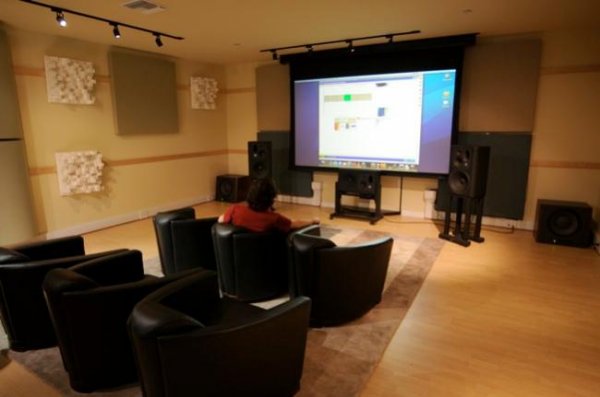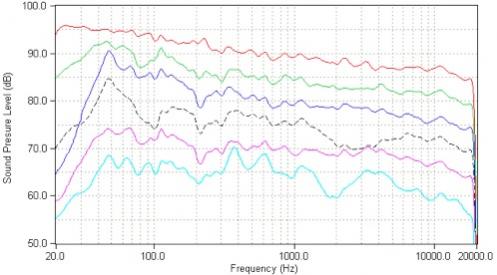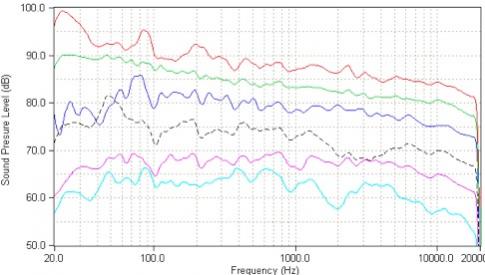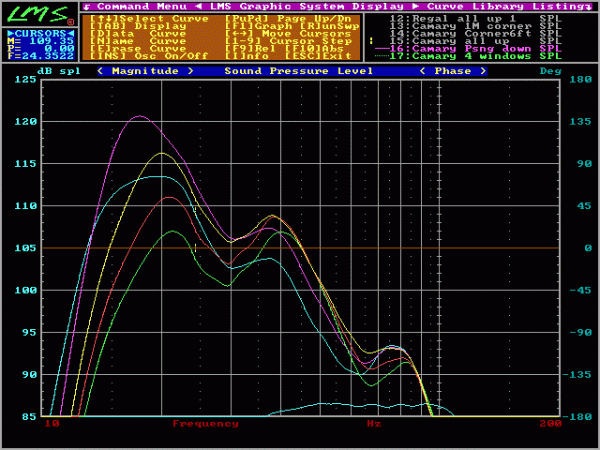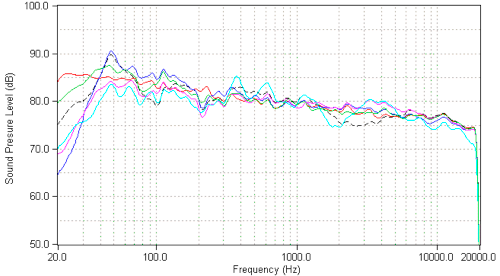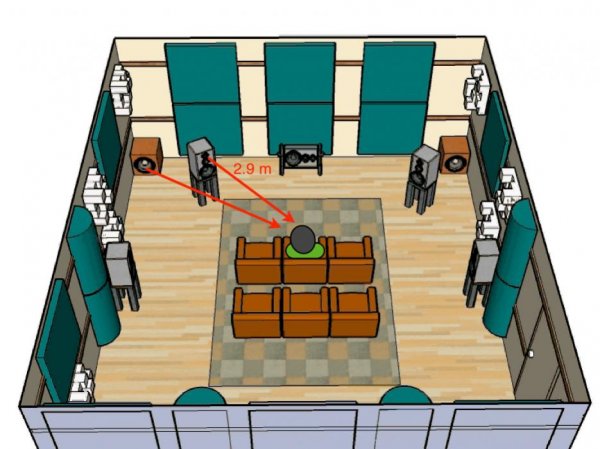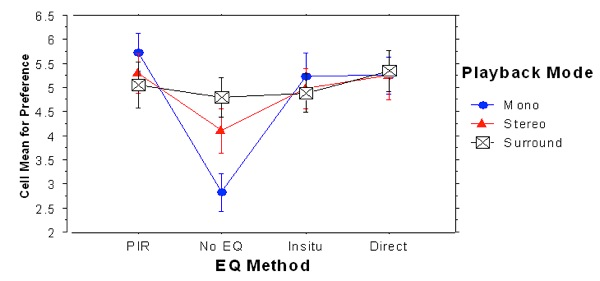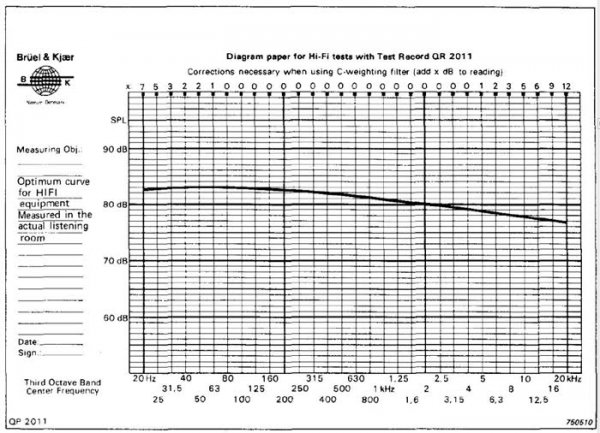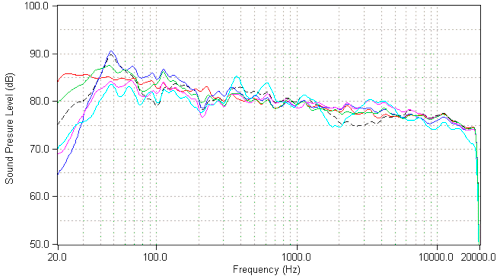Well, we have five different target curves in the study so in that regard, there is a comparison of that many. And there was good separation of subjective results between two buckets: those that had used flat response versus those that had sloping down. The latter did better.
Not exactly. Audyssey curve also sloped down and it did the worst. It may have been flat in the bass but it attenuated the treble.
It did worse than the curve that was flat all the way across. At least the other flat curve was deemed as good as no EQ.
There could have been other reasons why Audyssey performance was undesirable and probably the worst thing about it IMO is how ragged it came out, just as bad as the uncorrected response if not worse plus there is that BBC burble in the midrange too and the bass extension was pulled back by the flat part of the bass curve and the -3dB limit. There were so many things going on it is IMO invalid to point to any one thing and blame it for the poor performance in listening tests.
Outside of that, I don't think more precision is fruitful. Ultimately what tonal curve we need for each and every piece of content is unknown because we don't know what the producers and talent heard in their rooms. This is why I continue to say that the Harman curve should be the starting point and you adjust based on taste.
That certainly works. It might not be optimal though and it also involves a manual step. Auto-manual EQ?
For material with mix problems, it makes more sense to use the tone controls. The room EQ is supposed to EQ the room, not the programming. It is highly unlikely that people mixing material are going to EQ the material to correct for problems in speaker response to the level of detail that room EQ does, and even more unlikely that any user of room EQ is going to tweak the curve for every program.
IMO the whole claim that the reason flat room EQ is undesirable is because it does not accurately reflect the original intent in the mixing room is a fallacy. IMO the reason flat room EQ is undesirable is that it violates the intent of the speaker designer who designed the speaker to sound good with a sloping down power response in an enclosed space.
Besides, Harman did not test the target curves as an independent variable so your statement is only a supposition. For someone who is normally quite specific in demanding science, your implicit assumption that this experiment validated the target curve of the winning system is out of character. There were many more variables involved and the most striking one is the smoothness and extension of the Harman curve. That could have accounted for a lot of the preference. In fact their own conclusion states exactly that.
Numerical analysis to determine something that ultimately has no calibration at the source is a fruitless endeavour.
The speaker itself has excellent calibration. Pro speakers are reference audio generators. That is why I propose measuring the speaker in the room to determine the proper curve in the room.
Here, check this out:
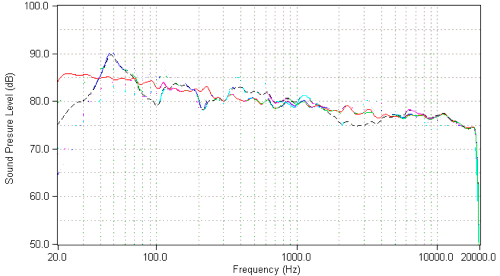
I filtered out everything but Harman EQ and no EQ using a bitmap editor.
Look that over and tell me Harman did not just draw a straight line through the in-room response. From my perspective, they did exactly what you are telling me is the wrong approach and at least one person who claimed to know supports that supposition.
I think it is worth some investigation. If I had the resources I would just do it, patent it, and laugh (or cry, depending on if it worked) all the way to the bank.
Since that information does not exist as a practical matter for anything other than Harman speakers, Auto EQ systems still need to be performant. Hence, when we find something that works for majority of people, we should use that. And the sloping down target curve is one of those. It has been shown over and over again to be the right strategic choice.
...but it has never been compared to my proposal.
I have been making the same claim to support Audyssey in budget systems. It works well enough for the purpose and many people lacking in bottomless pockets agree with me. Does that mean it is time to rest on my laurels?
My proposal would also be a sloping down target curve when a speaker is measured in a room but the slope and curvature would be measured directly off the speaker where it sits.
Harman speakers with custom EQ is actually a great idea. Any known irregularities in the on-axis response can be EQd out by design. In that respect it has a distinct advantage over my proposal, but I still think there is also value in setting the target or at least tweaking it from the measured in-room response. For all we know maybe that is exactly what that JBL EQ for Harman speaker is already doing. Have you asked them?
I think you misunderstanding me. I am not proposing to rewrite the book on EQ based on a guess. Only an impulsive idiot does something like that. I am identifying what I perceive as unanswered questions and speculating on a new approach and proposing an experiment like Harman's only more sophisticated in its approach to the problem rather than empirical guess based on listener preference (if that is actually how it happened... really hate all this mindreading).
When I said I would blow a million on my proposed EQ it is because I like to experiment, not because I want to dictate. OK?
Anyway Onkyo seems to have already adopted something similar with AccuEQ so it seems that it is coming whether anyone wants it or not.
Harman tested EQ systems with widely varying
performance (not just widely varying targets) and it did not compare straight line to B&K curved line nor did it attempt to vary the slope or shape of their straight line nor did it attempt to determine if there were any correlations between in-room non-EQd response and the best target across multiple types of speakers in multiple placements in multiple rooms.
Their justification for not checking on all of this was... mono listening is more accurate? B&W sells the most pro speakers? No, it was probably because they ran out of budget, time, and/or patience.
Or maybe just like already indicated by others on this thread they already knew about everything I am proposing to check into and either quietly slipped it in to the target curve or just ignored it deliberately because of the complexity of getting it to converge reliably. Who knows? I am no mind reader and there are proprietary technologies involved.
Do you have the actual Harman EQ they used in that study? Does it automatically adjust the slope of the target based on in-room response? Have you tested it for any changes in target due to measurement? Maybe everyone looks at that study and just guesses that the slope is a fixed target. I do not know, I am not in that league.
I am simply proposing to check into it. I am proposing to finish what Harman started instead of just leaving it status quo because it was good enough last year.
As far as people not being able to discriminate EQ well with multiple speakers, there are several likely possibilities to explain that.
One is the 'euphonic' experience of surround sound that you mentioned distracting listeners from the sound of a speaker.
Another is the filling in of gaps in the spectrum with multiple sources stimulating multiple room modes and multiple reflections etc. just like with multiple subwoofers.
Another is the application of the same EQ target curve to all speakers regardless of type and placement when they actually need different target curves to optimize them individually.
There are at least three possible explanations for why it is easier to discern frequency response with only one speaker. I think it is worth asking the questions in a scientific experiment. The answer could have profound implications for the audio market.
What I am really saying here is why didn't Harman try everything possible to optimize the target? They certainly did a great job with the implementation. That measured response is straight as an arrow. Never seen anything like it anywhere else.
Every time I see someone defending that target it is always because Audyssey flat or flattish EQ with its choppy, bandlimited measured result came last in preference. That does not validate Harman's target curve as the optimal approach to room EQ. All it does is make Harman EQ superior to Audyssey under those test conditions.
Here is a nice thought experiment. Put the same sound system into a huge anechoic chamber that absorbs down to 10Hz. EQ it with Harman's treble-attenuated response and then EQ it with Audyssey flat MultEQ-XT32.
Listen to it on-axis.
Which one wins the preference test now?
If that thought experiment does not at least raise some doubt about the wisdom of always using a fixed target curve as the first approximation and ignoring the actual in-room response, then I might as well check myself into an insane asylum because it means I have totally lost my marbles.




